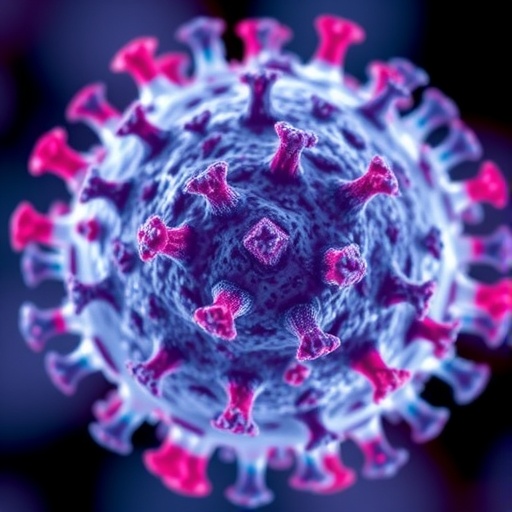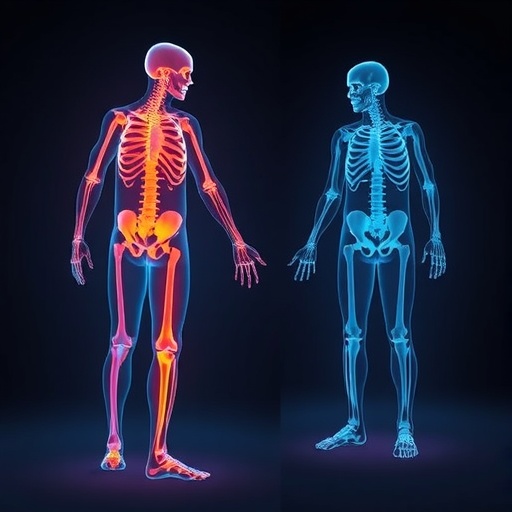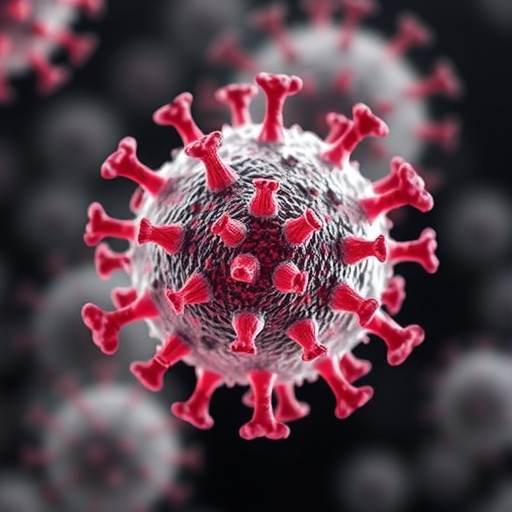In a groundbreaking advance at the nexus of synthetic biology and molecular engineering, researchers have unveiled a revolutionary platform to precisely control cytokine signaling dynamics by designing proteins capable of facilitated dissociation. This approach enables the tuning of signal timing in living cells, opening avenues for next-generation therapeutic modulation of immune responses and cell fate decisions. The innovation hinges on engineering fusion proteins that allosterically couple target recognition with effector binding, thereby programming dissociation kinetics that were previously inaccessible to designed systems.
The foundational strategy involves creating structured switch–binder fusion proteins, termed “hosts,” that can toggle between conformational states upon target binding. Using molecular visualization tools like PyMOL combined with cutting-edge computational design frameworks including RosettaFold, RFDiffusion, and ProteinMPNN, the team meticulously sculpted these host proteins. The engineering ensures tight steric complementarity—state X of the switch avoids overlap with the target, whereas state Y generates a controlled clash that drives conformational rearrangement. This conformational toggling underlies the mechanism of facilitated dissociation, where the presence of the target accelerates the release of the effector molecule, effectively acting as a molecular timer.
A key innovation was the implementation of multi-state protein design, supported by deep learning-based structure prediction with AlphaFold2 and its variants, to optimize sequences compatible with both conformational states. This process entails pairing complementary backbones while enforcing sequence symmetry to ensure robust folding and function. The design workflow was further refined by iterative computational filters and Rosetta energy landscapes to maximize conformational discrimination and binding specificity, enabling finely tuned allosteric coupling.
To precisely regulate the switchable behavior, researchers employed an induced-fit register-shift approach. This elegant technique involved offsetting helices within the protein scaffold by one heptad repeat to subtly shift domain positioning. By maintaining an open binding cleft while introducing controlled displacement, the switch protein could transiently harbor the effector in state X and release it upon transition to state Y, triggered by target interaction. This approach balanced structural stability with dynamic plasticity, allowing functional modulation without destabilizing the host fold.
The team demonstrated the utility of this design paradigm by engineering rapid response sensors leveraging split luciferase fragments fused to switch components. They innovatively “caged” the SmBiT peptide within the effector domain, blocking luciferase reconstitution until target binding induced uncaging and luminescence activation. This effectively created an ultra-sensitive bioassay with kinetics tunable over orders of magnitude, as validated by successive rounds of SPR, fluorescence polarization, and steady-state luminescence experiments. Notably, they extended the platform to fuse SARS-CoV-2 receptor-binding domain binders, showcasing versatility and applicability in viral diagnostics.
Protein expression and purification were executed with rigorously optimized bacterial systems, incorporating solubility tags and Ni-NTA affinity chromatography enhanced by size exclusion chromatography to isolate monomeric species. Biotinylated versions enabled immobilization on SPR sensor chips, facilitating detailed kinetic and thermodynamic analyses of binding interactions. Coupled with chemically synthesized peptides and state-of-the-art structural biology techniques, this platform integrated molecular specificity with robust experimental throughput.
Biophysical characterization elucidated the thermodynamics and kinetics underlying allosteric transitions. Circular dichroism confirmed protein folding integrity, while X-ray crystallography provided atomic-level snapshots of key conformational states. DEER spectroscopy furnished distance constraints revealing switch dynamics in solution, and molecular dynamics simulations complemented these data by modeling structural ensembles and flexibility at microsecond timescales. Together, these methods validated the design principles and highlighted the precision achievable in synthetic protein machines.
Functional assays in live cells underscored the biological relevance and control achievable by these switches. Using single-molecule imaging via TIRF microscopy, researchers tracked receptor dimerization dynamics on the plasma membrane. The ability to trigger receptor dissociation with tailored effector molecules demonstrated the system’s capacity to modulate cell-surface signaling complexes with spatial and temporal specificity. Complementary flow cytometry and signaling readouts confirmed that cytokine pathways could be transiently activated and deactivated, mimicking and surpassing natural temporal controls.
Importantly, the engineered switches exhibited a capacity to regulate downstream signaling cascades such as STAT5 phosphorylation, central to immune cell function. By manipulating the presence of the effector peptide, the duration and amplitude of cytokine signaling were precisely controlled. This level of regulation enables dissection of signal-dependent gene expression programs and cellular phenotypes with unprecedented clarity, as shown by qPCR and RNA-seq analyses in primary human T cells. Such control has profound implications for immunotherapy, autoimmune disease modulation, and tissue engineering.
From a technological perspective, this work pioneers a modular protein design framework that couples computational prediction with experimental validation to fine-tune biomolecular interactions dynamically. The facilitated dissociation mechanism emerges as a versatile tool not only for cytokine signaling but potentially for a wide range of biological systems where temporal control of protein–protein interactions is paramount. The underlying principles could be extended to design switchable enzymes, transcription factors, and synthetic receptors.
Moreover, the intricate interplay between structural design, energetic landscapes, and kinetic tuning exemplifies the maturation of synthetic biology into a precision discipline. Bridging high-resolution structural methods with live-cell functional assays, the work illuminates how allosteric networks can be engineered at will, rewriting the canonical understanding of protein function. This sets a new standard for rational design of molecular timers and responsive biomaterials.
In an era defined by urgent biomedical challenges, the ability to program timing into cytokine signaling could transform therapeutic interventions. The demonstrated control over signal initiation and termination suggests new possibilities for minimizing off-target effects, reducing toxicities, and optimizing dosing regimens. This platform could also accelerate drug discovery pipelines by enabling rapid, multiplexed screening of signaling modulators in physiologically relevant contexts.
The integration of advanced computational tools with innovative protein engineering showcased here presages a future where biomolecular machines with bespoke temporal profiles become standard in both research and medicine. This study not only presents a technical tour de force but also charts a visionary path forward, highlighting the power of design to transform cellular communication networks. As this technology evolves, it may unlock new frontiers in personalized therapy, synthetic immunology, and cellular computing.
Subject of Research: Design and engineering of proteins enabling facilitated dissociation to regulate cytokine signaling kinetics.
Article Title: Design of facilitated dissociation enables timing of cytokine signalling.
Article References:
Broerman, A.J., Pollmann, C., Zhao, Y. et al. Design of facilitated dissociation enables timing of cytokine signalling. Nature (2025). https://doi.org/10.1038/s41586-025-09549-z
Image Credits: AI Generated
Tags: advanced molecular engineering methodsallosteric protein designconformational toggling mechanismscytokine signaling dynamicsdeep learning in protein designfacilitated dissociation in proteinsmolecular visualization tools in biologymulti-state protein systemsprotein engineering techniquessignal timing in living cellssynthetic biologytherapeutic modulation of immune responses





